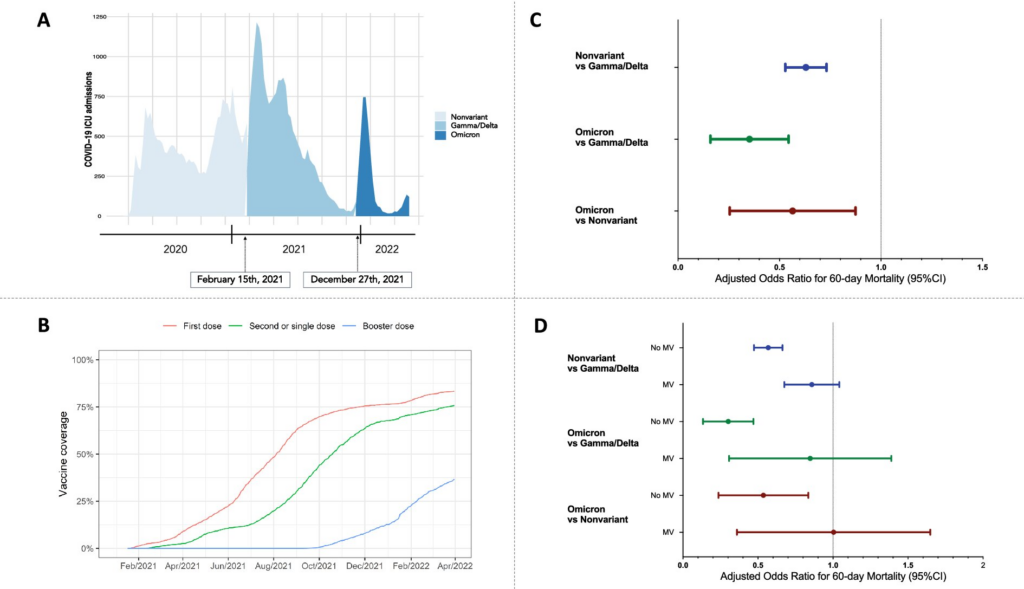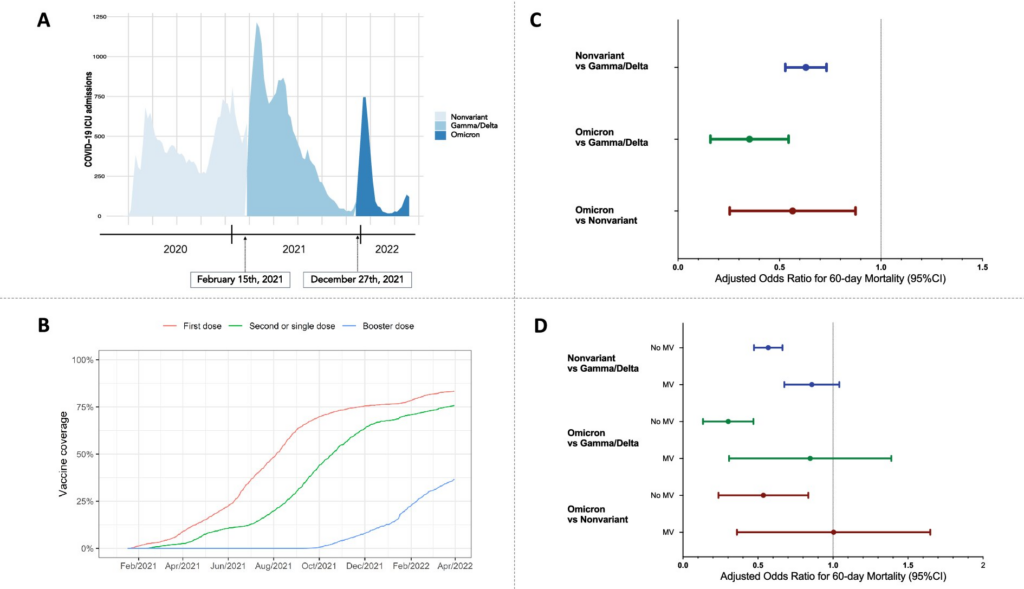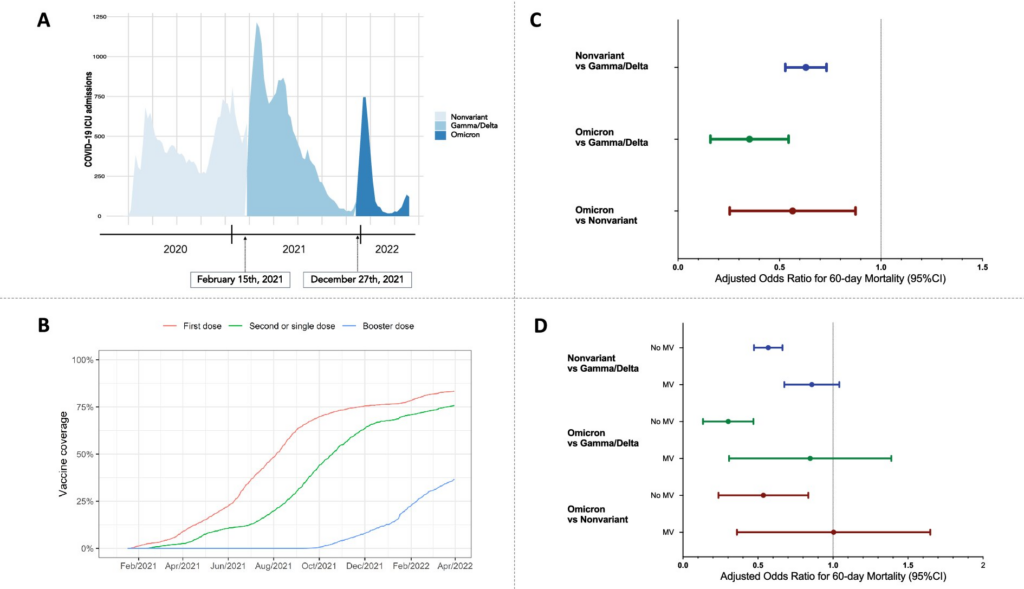Study indicates COVID-19 Omicron outbreak had lower mortality than earlier strains 2023

The public feared a new COVID-19 strain during the pandemic’s peak. Omicron, delta, and gamma SARS-CoV-2 mutations were concerning. Variants of concern can overwhelm the health system and increase critical care unit admissions due to their virulence and immune system invasion.
The D’Or Institute for Research and Education (IDOR) recently released a study in Intensive Care Medicine using big data analysis to analyze the profiles of Brazilian ICU patients during distinct VOC dominances.
RT-PCR-diagnosed COVID-19 patients from many centers were studied. Between February 27, 2020, and March 29, 2022, 47,465 patients were admitted to one of 231 Brazilian ICUs studied. Rede D’Or, Latin America’s largest private hospital network, supplied admission data.
Omicron outbreak’s death rate was lower than that of earlier COVID-19 outbreaks.


The scientists separated the data into three epochs: epoch 1 (no dominating VOC; 21,996 admissions), epoch 2 (gamma/delta dominance; 21,183 admissions), and epoch 3 (omicron dominance; 4,286 admissions).
They then examined hospital mortality within 60 days of admission and intubation rates in the three periods. A biostatistics software used mathematical models to calculate the adjusted mortality rate, taking into account age, sex, comorbidities, and other variables that could affect a patient’s mortality.
Omicron patients experienced more COVID-19-related dysfunctional strokes and needed less mechanical breathing
At epoch 3 (omicron dominance), patients averaged 68 years old, compared to 52 at epoch 2 and 55 at epoch 1. Omicron patients experienced more COVID-19-related dysfunctional strokes and needed less mechanical breathing. The same group had reduced adjusted mortality. All VOC dominances had similar fatality rates for mechanically ventilated individuals.


Elderly and immunosuppressed patients who need mechanical breathing at omicron are most delicate and at danger of getting serious illness. Our study shows that these individuals should be cautious regarding hospitalization and mortality.
“Even in epoch 3, the most recent in the study, when there was already vaccination coverage, [there was no] relevant downturn in mortality rates for patients with COVID-19 who needed mechanical ventilation,” adds IDOR researcher and first author Dr. Pedro Kurtz.
The researcher reports that by the end of 2021, more than 60% of Brazilian adults had received the first dose of vaccination, 30% had received a second dosage, and more than 90% of those over 60 had received a full vaccination.
Thus, omicron mortality was decreased due to vaccination coverage. Even with complete immunization, the dissemination of variations with high infectivity puts vulnerable people at risk, especially older patients with comorbidities who may need hospitalization in severe cases.
